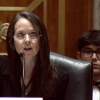The Right Way to Cover Hacks and Leaks Before the Election

It seems clear, with four years of hindsight, that the American news media owes John Podesta an apology. The political media did almost everything wrong in covering the theft-and-leak of his private emails amid the heat of the 2016 presidential campaign, four years ago today—and yet it’s not at all clear that if confronted by an operation similar to what Russian intelligence executed in targeting the Democratic National Committee via Hillary Clinton’s campaign chair, that we’d get it any more right now.
In fact, so-called “hack-and-leaks” remain one of the most difficult stories to confront appropriately, and as we enter the final weeks of the 2020 presidential campaign—when each day seems primed for a surprise—it’s worth thinking deeply about what makes these incidents so pernicious and how, if one emerges in the weeks ahead, we as a news media and a society might respond more maturely and rationally than in 2016.
From dozens of conversations this year with numerous reporters, editors, researchers, and executives—as well as a tabletop exercise at the Aspen Institute that Vivian Schiller, the former CEO of National Public Radio who now directs Aspen’s media and technology program, and I ran this summer about how media organizations should respond to a hack-and-leak—it’s clear there’s a shared unease about how the news media handled the 2016 Russian attack on the DNC and Clinton campaign chair John Podesta. The unease stems not from any partisan preference for or against Hillary Clinton—it has to do with the sense that the US media allowed itself to be the delivery mechanism for a Russian attack on our democracy.









































































